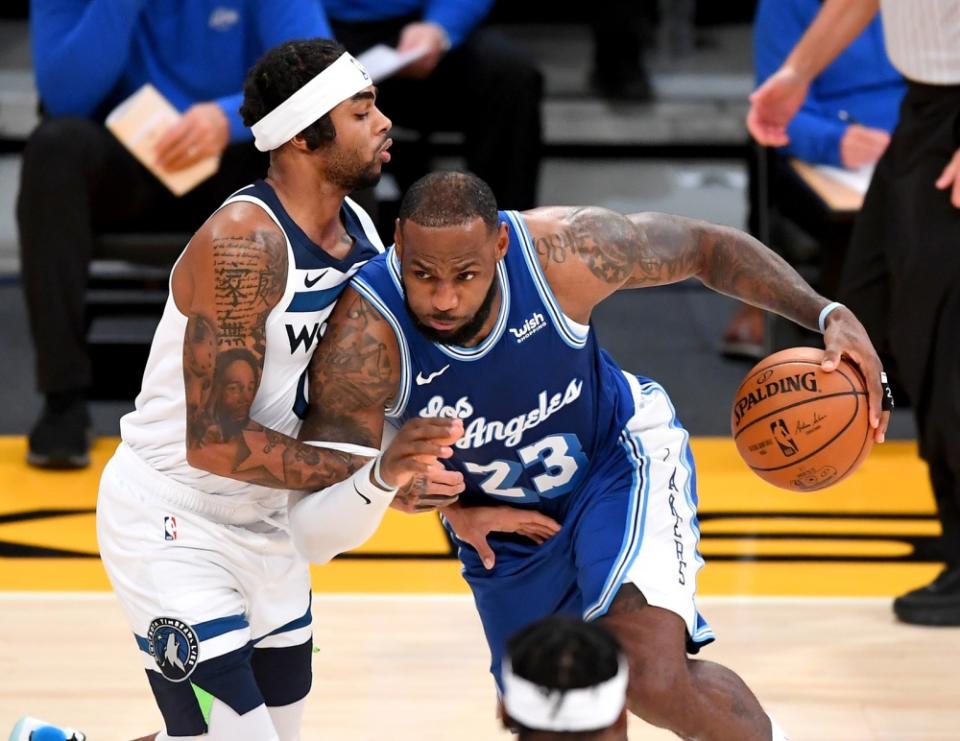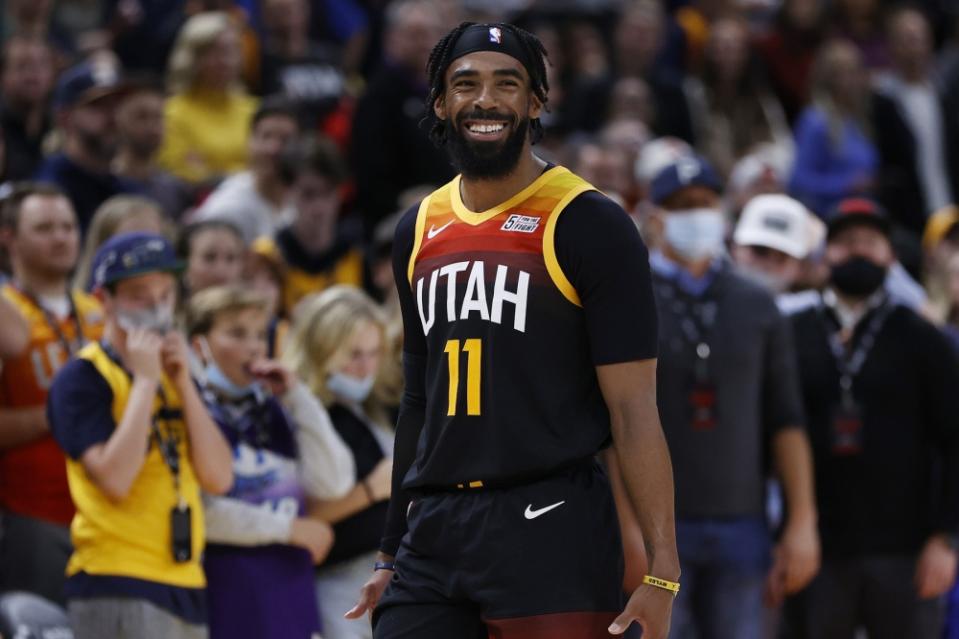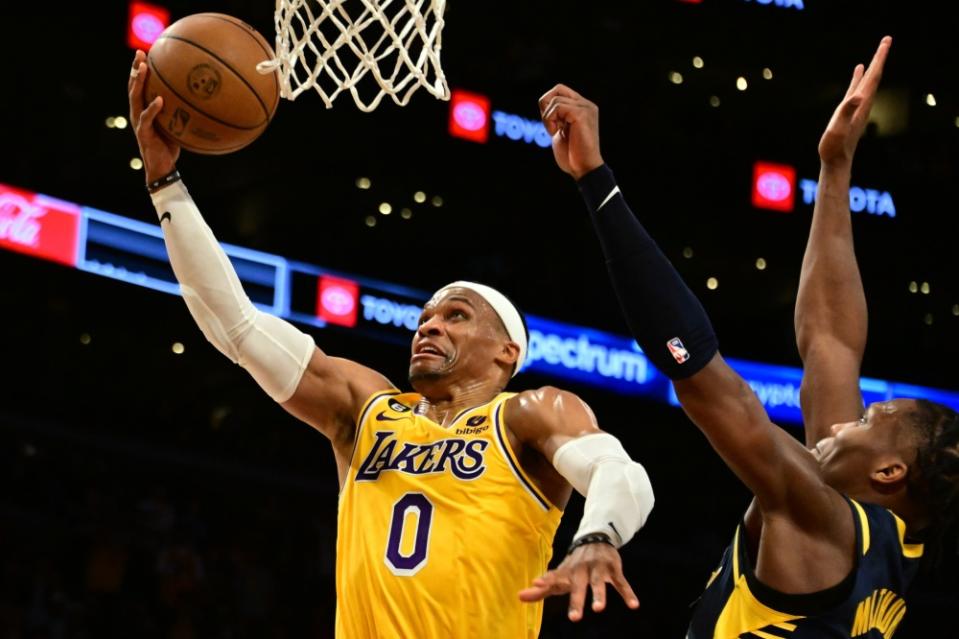D’Angelo Russell/Russell Westbrook trade: How it impacts Lakers, Wolves and Jazz

The eve of the trade deadline featured one of the bigger names that many were anticipating to get dealt. Wednesday’s three-team trade saw the Lakers end the Russell Westbrook era by moving him, Damian Jones, Juan Toscano-Anderson, and a 2027 first-round pick to the Utah Jazz for a package that includes former Laker D’Angelo Russell as well as Malik Beasley and Jarred Vanderbilt. In exchange for Russell, the Minnesota Timberwolves acquired Mike Conley and Nickeil Alexander-Walker as well as several second-round picks from the Jazz.
Here is the breakdown of the trade and how it impacts each team.
Why the Lakers did it

Jayne Kamin-Oncea-USA TODAY Sports
When the Lakers traded Kentavious Caldwell-Pope, Kyle Kuzma, Montrezl Harrell, and a first-round pick for Westbrook, they left themselves vulnerable with a ton of downside with a roster comprised with 10 minimum salaried players. They experienced the worst-case scenario from making this trade by not qualifying for the play-in tournament last season and seeing the Pelicans get rewarded with a high lottery pick in the 2022 draft. The fit with Westbrook was obviously not there early on, but they needed to be responsible about how they’d adjust.
The Lakers ended up trading a first-round pick to undo the Westbrook trade, except they didn’t replace the perimeter defense they originally traded away in addition to that of Alex Caruso. Part of the reason they made this deal now is to improve the team for this season. Moving Westbrook is addition by subtraction and they also gain two great shooters, something they really need. They also keep their luxury tax penalty neutral at $45 million and generate two small trade exceptions worth $2.3 million and $1.8 million.
But the other reason they made this deal now is because they were on a clock to get their books in order for this coming offseason. The Lakers had the option to generate $30 million in cap space by letting Westbrook’s contract expire and they still could pursue that path despite making this trade. However, this path gives the Lakers less spending power and is less likely to help them establish the depth they need.
The Lakers are now in a position to operate as an over-the-cap team this offseason if they bring back Russell on a new contract and exercise Beasley’s $16.5 million team option. This would allow them to re-sign their top free agents like Russell, Rui Hachimura, Austin Reaves, Lonnie Walker and use a higher mid-level exception, likely the taxpayer MLE projected at $7 million.
More importantly, this path could keep them in the market for another big trade in July. If an All-Star the Lakers have interest in becomes available in July, they would not have the adequate salary matching required to acquire one with cap space. But if they extend Russell to a deal near his salary range, he would retain his trade eligibility for the upcoming offseason. A combination of Russell and Beasley or Vanderbilt could match for just about anybody in a deal. Russell is eligible to extend with the Lakers through June 30 for up to two years, $67.5 million.
As part of the deal, the Lakers traded their 2027 first-round pick to the Jazz. It is Top 4 protected for that season and doesn’t roll over into future seasons. In fact, if it falls within the protected range, the Lakers would instead convey their 2027 second-round pick. This allows L.A. to trade their 2029 first-round pick before the deadline passes. As an example, they could try to package it with Patrick Beverley and two minimum-salaried players to acquire a player making just over $20 million. They are also now down to two available second-round picks to trade right now.
If they don’t trade their 2029 first-round pick today, they could trade it along with their 2023 first-round pick this offseason. This could be the foundation for a stronger return if they need to make further upgrades.
Why the Timberwolves did it

Jeffrey Swinger-USA TODAY Sports
The Timberwolves’ all-in trade for Rudy Gobert hasn’t worked out as well as they’d hoped, so they went ahead and acquired his old teammate Conley. They’ve righted the ship after a bad start but most of their recent success has to do with the ascent of Anthony Edwards. Maybe when Karl-Anthony Towns returns, they’ll have a more cohesive unit.
Minnesota had a big decision to make on Russell with his impending unrestricted free agency. If they didn’t trade him now, they wouldn’t have been able to replace him in the summer since they projected to operate over the cap. The most likely outcome would’ve been re-signing him instead of losing him for nothing.
Instead, they are able to turn Russell into Conley and Nickeil Alexander-Walker, but they got a lot older in the process. To compensate for that, the Timberwolves negotiated for draft compensation, which included two second-round picks from the Jazz and one from the Lakers. Conley has a $24.4 million salary for next season but is only guaranteed for $14.3 million. They will be able to extend him starting this offseason.
Minnesota still needs to cut or trade someone prior to completing this deal since they already had a full roster and are trading two players for one. They gain more flexibility going from $3 million below the luxury tax to $6.7 million below for this season. They also generate a trade exception worth $3.7 million.
Why the Jazz did it

Richard Mackson-USA TODAY Sports
Utah has been in asset accumulation mode since last offseason and this was another step in that plan. Conley, Beasley, and Vanderbilt are all great role players who played a key part in the Jazz’s early success this season. But they had no place in their future and are better utilized on playoff teams. With them out of the rotation, the Jazz can bottom out in hopes of landing a high lottery pick in this year’s draft.
Neither of these players was worth a first-round pick on their own, but together the Jazz were able to parlay them into one. They now have 15 first-round picks over the next seven drafts, half of which were acquired by trading Donovan Mitchell and Rudy Gobert. They also open even more minutes to their young core featuring Walker Kessler and Ochai Agbaji.
The Jazz are now projected to have significant cap space this offseason. They could generate around $30 million if they do not waive Kelly Olynyk, who is partially guaranteed for $3 million, and all of Jordan Clarkson, Talen Horton-Tucker, Rudy Gay, and Damian Jones exercise their player options. Even if Clarkson opts out and re-signs on a higher average salary than his current $14.3 million amount, they could still have around $25 million in cap space. If he opts out and the Jazz don’t re-sign him, they’d project to have $45 million in room.
Utah takes on a bit more salary in this deal pushing them from $7 million below the luxury tax up to $3.4 million below. They could get further breathing room if they trade veterans like Clarkson and Olynyk or via a Westbrook buyout. They now have an open roster spot and also generate two trade exceptions worth $5 million and $4.4 million. They have seven trade exceptions at the moment but two worth $9.8 million and $1.5 million are set to expire today if unused.
[listicle id=1901165]
[listicle id=1766852]
[listicle id=1901047]

 Yahoo Movies
Yahoo Movies 
